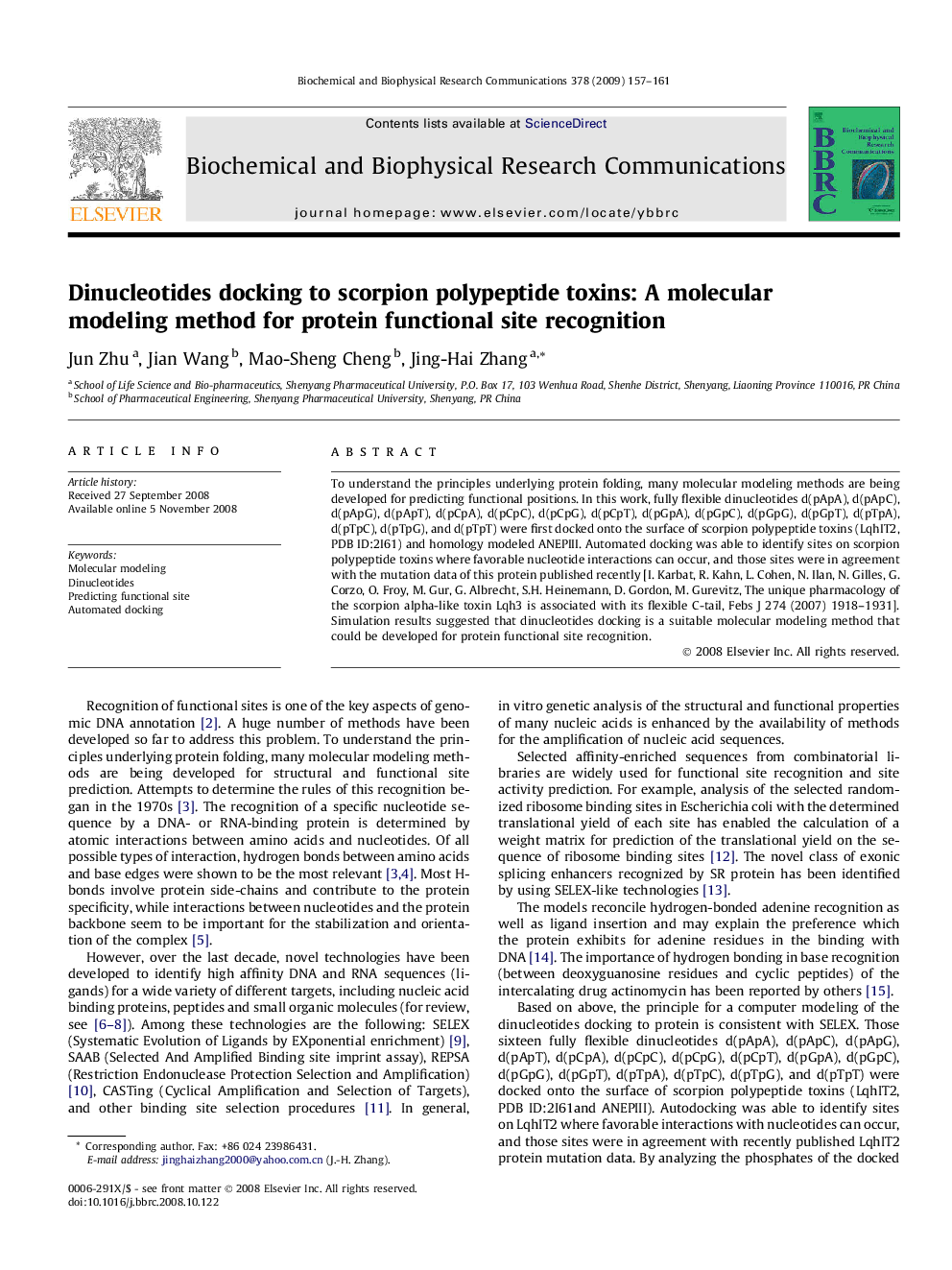| کد مقاله | کد نشریه | سال انتشار | مقاله انگلیسی | نسخه تمام متن |
|---|---|---|---|---|
| 1935049 | 1050657 | 2009 | 5 صفحه PDF | دانلود رایگان |

To understand the principles underlying protein folding, many molecular modeling methods are being developed for predicting functional positions. In this work, fully flexible dinucleotides d(pApA), d(pApC), d(pApG), d(pApT), d(pCpA), d(pCpC), d(pCpG), d(pCpT), d(pGpA), d(pGpC), d(pGpG), d(pGpT), d(pTpA), d(pTpC), d(pTpG), and d(pTpT) were first docked onto the surface of scorpion polypeptide toxins (LqhIT2, PDB ID:2I61) and homology modeled ANEPIII. Automated docking was able to identify sites on scorpion polypeptide toxins where favorable nucleotide interactions can occur, and those sites were in agreement with the mutation data of this protein published recently [I. Karbat, R. Kahn, L. Cohen, N. Ilan, N. Gilles, G. Corzo, O. Froy, M. Gur, G. Albrecht, S.H. Heinemann, D. Gordon, M. Gurevitz, The unique pharmacology of the scorpion alpha-like toxin Lqh3 is associated with its flexible C-tail, Febs J 274 (2007) 1918–1931]. Simulation results suggested that dinucleotides docking is a suitable molecular modeling method that could be developed for protein functional site recognition.
Journal: Biochemical and Biophysical Research Communications - Volume 378, Issue 2, 9 January 2009, Pages 157–161